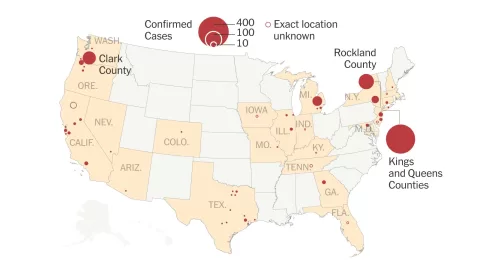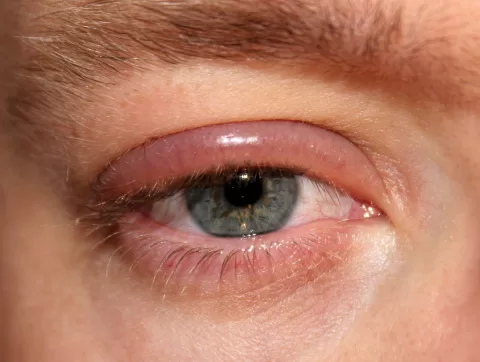Schistosomiasis, commonly referred to as bilharzia, is a neglected tropical disease that poses a significant health challenge across the globe, particularly in sub-Saharan Africa. Affecting an estimated 236 million people, this disease is caused by parasitic worms known as schistosomes, which thrive in contaminated freshwater environments. The symptoms of schistosomiasis can range from mild to severe, leading to debilitating health issues if left untreated, underscoring the importance of early detection and effective schistosomiasis treatment. Understanding the causes of schistosomiasis and recognizing its potential complications are crucial for vulnerable populations, especially school-aged children. In this article, we will explore the various symptoms, treatment options, and preventive measures for schistosomiasis, shedding light on its global impact and the ongoing efforts to combat this disease.
Known in some regions as bilharzia, schistosomiasis is a parasitic infection caused by trematode worms that inhabit freshwater environments. This condition is particularly prevalent in areas where people come in contact with contaminated water, leading to various health problems associated with the symptoms of schistosomiasis. The life cycle of the schistosome involves freshwater snails as intermediate hosts, which play a key role in the transmission of the disease. Addressing the causes of schistosomiasis requires an understanding of these vectors and the environmental conditions that facilitate their proliferation. To effectively manage and reduce the prevalence of this disease, it is essential to implement preventive measures for schistosomiasis, including community education and improved access to clean water.
Understanding Schistosomiasis: Causes and Transmission
Schistosomiasis, also referred to as bilharzia, is primarily caused by parasitic worms from the *Schistosoma* genus. These trematodes are typically found in freshwater bodies, where they thrive in specific environmental conditions. The infection is acquired when humans come into contact with contaminated water, often during activities such as swimming, bathing, or fishing. Understanding the lifecycle of these parasites is crucial, as it highlights the importance of avoiding exposure to freshwater sources known to harbor infected snails.
Once the larvae enter the human body, they migrate to various organs, including the intestines and bladder, where they mature into adult worms. This complex lifecycle not only underscores the environmental factors contributing to schistosomiasis but also indicates the potential for widespread transmission in endemic regions. By identifying and controlling these transmission dynamics, public health initiatives can focus on reducing infection rates among vulnerable populations.
Symptoms of Schistosomiasis: Early Detection and Long-Term Effects
Recognizing the symptoms of schistosomiasis is essential for timely intervention. Initial signs, known as Katayama syndrome, typically manifest within weeks of infection and may include fever, chills, and muscle aches. As the disease progresses, more severe symptoms can develop, such as abdominal pain, bloody urine, and fatigue. The diverse range of symptoms, stemming from different *Schistosoma* species, complicates early diagnosis and highlights the need for increased awareness among at-risk communities.
If left untreated, schistosomiasis can lead to chronic complications, including liver damage and bladder cancer. The long-term health consequences not only affect individuals but also impose significant burdens on healthcare systems and economies in endemic regions. Therefore, understanding the symptoms of schistosomiasis is critical for both healthcare providers and communities, emphasizing the need for education and prompt medical attention in the face of potential infection.
Effective Treatment Options for Schistosomiasis
The primary treatment for schistosomiasis is Praziquantel, a medication recommended by the World Health Organization (WHO) for its efficacy against all *Schistosoma* species. Administering this drug can significantly reduce the burden of disease in affected populations. Community-wide treatment initiatives, particularly mass drug administration (MDA) campaigns, are instrumental in controlling schistosomiasis and improving health outcomes for vulnerable groups, particularly children.
While Praziquantel has proven effective, ongoing research into alternative treatments and delivery methods is essential for enhancing treatment strategies. Innovative approaches, such as integrating MDA with health education and improved sanitation practices, can create a comprehensive framework for combatting schistosomiasis. By addressing both the immediate and systemic factors contributing to the disease, healthcare professionals can foster sustainable health improvements in endemic regions.
Preventive Measures Against Schistosomiasis
Preventing schistosomiasis is a multi-faceted approach that includes improving water quality, controlling snail populations, and educating communities. Access to clean water is vital, as it directly reduces the risk of exposure to contaminated sources. Efforts to manage freshwater snail habitats can significantly lower the transmission rates of schistosomiasis, making environmental control measures a crucial aspect of prevention.
Moreover, education plays a pivotal role in preventing schistosomiasis. Raising awareness about the disease, its transmission routes, and preventive strategies empowers communities to protect themselves effectively. Regular mass drug administration campaigns must also be part of preventive strategies to maintain low infection levels and protect at-risk populations from future outbreaks.
Global Impact of Schistosomiasis and Current Trends
Schistosomiasis poses a significant global health challenge, with millions affected and thousands of deaths reported annually. The economic impact of this neglected tropical disease is profound, as it can hinder productivity and development in endemic regions. The WHO estimates that schistosomiasis is the second most economically significant parasitic disease after malaria, emphasizing the urgent need for concerted global efforts to address it.
Recent developments in schistosomiasis control highlight the importance of integrated strategies that combine treatment with improved water, sanitation, and hygiene (WASH) practices. As research continues to evolve, the international community is increasingly focusing on innovative interventions to reduce the disease burden. Collaborative efforts across borders are essential to enhance access to resources and education, ultimately aiming for the elimination of schistosomiasis as a public health threat.
Frequently Asked Questions
What are the common symptoms of schistosomiasis (bilharzia)?
The symptoms of schistosomiasis, also known as bilharzia, can vary depending on the stage of infection. Initial symptoms include fever, chills, and muscle aches, typically appearing within 1-2 months after infection. As the disease progresses, more specific symptoms such as abdominal pain, diarrhea, bloody urine, and fatigue may develop. If left untreated, chronic schistosomiasis can lead to severe complications, including liver damage and kidney failure.
What causes schistosomiasis and how is it transmitted?
Schistosomiasis is caused by parasitic flatworms of the genus *Schistosoma*. The disease is primarily transmitted through contact with freshwater contaminated with larvae released from infected freshwater snails. When humans enter contaminated water, the larvae penetrate the skin, leading to infection. The three main species responsible for schistosomiasis in humans are *Schistosoma mansoni*, *Schistosoma haematobium*, and *Schistosoma japonicum*.
What are the primary treatment options for schistosomiasis?
The primary treatment for schistosomiasis is **Praziquantel**, which is effective against all species of schistosomes. This medication kills adult worms and prevents further reproduction. Mass drug administration (MDA) campaigns are often conducted in endemic areas to ensure at-risk populations receive treatment, particularly children and women. A single dose of Praziquantel is usually sufficient to significantly reduce the prevalence of the disease.
What preventive measures can be taken to avoid schistosomiasis?
Preventive measures for schistosomiasis include improving access to clean water and sanitation, reducing freshwater snail populations through environmental management, and raising awareness about the disease’s transmission. Regular mass drug administration (MDA) campaigns in endemic areas are also crucial for maintaining low infection rates and preventing outbreaks. Education about avoiding contact with potentially contaminated water is essential, especially for children.
How does schistosomiasis impact global health?
Schistosomiasis, or bilharzia, is a significant public health challenge affecting over 700 million people globally, primarily in sub-Saharan Africa. It is estimated to cause between 4,400 and 200,000 deaths annually and has substantial socio-economic consequences. The disease affects vulnerable populations, particularly school-aged children, leading to long-term health issues and reduced economic productivity. Ongoing control efforts focus on improving treatment access and preventive strategies.
| Key Points | Details |
|---|---|
| Introduction | Schistosomiasis, or bilharzia, affects approximately 236 million people globally, mainly in sub-Saharan Africa. It poses significant health and socio-economic challenges. |
| Causes | Caused by parasitic worms (schistosomes) that enter through contact with contaminated freshwater, primarily from infected snails. |
| Symptoms | Initial symptoms include fever and chills; chronic symptoms can lead to severe complications like liver damage and bladder cancer. |
| Treatment | Praziquantel is the WHO-recommended treatment; mass drug administration (MDA) campaigns target high-risk populations. |
| Prevention | Improving water access, reducing snail populations, educational initiatives, and routine MDA are crucial for prevention. |
| Global Impact | Schistosomiasis causes approximately 4,400 to 200,000 deaths annually and has a significant economic impact. |
| Recent Developments | Research focuses on better treatments, diagnostics, and integrated control strategies to combat schistosomiasis. |
Summary
Schistosomiasis, also known as bilharzia, is a complex and significant public health concern that affects millions of individuals worldwide. Understanding its symptoms, causes, and treatment options is crucial for effective management and prevention. The disease is caused by parasitic worms and can lead to severe health complications if untreated. Preventive measures, such as improving access to clean water, reducing snail populations, and increasing community awareness through education, are essential in controlling its spread. With ongoing research and integrated strategies, there is hope for reducing the burden of schistosomiasis, ultimately aiming for its elimination.
The content provided on this blog (e.g., symptom descriptions, health tips, or general advice) is for informational purposes only and is not a substitute for professional medical advice, diagnosis, or treatment. Always seek the guidance of your physician or other qualified healthcare provider with any questions you may have regarding a medical condition. Never disregard professional medical advice or delay seeking it because of something you have read on this website. If you believe you may have a medical emergency, call your doctor or emergency services immediately. Reliance on any information provided by this blog is solely at your own risk.








